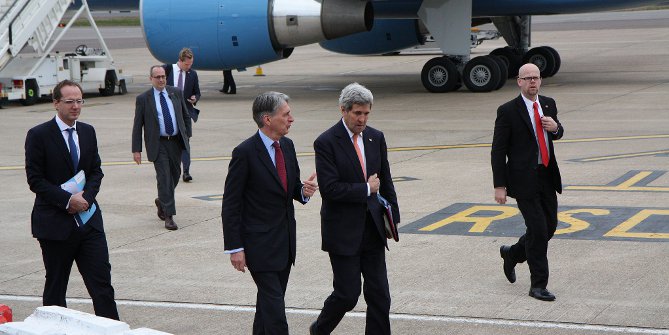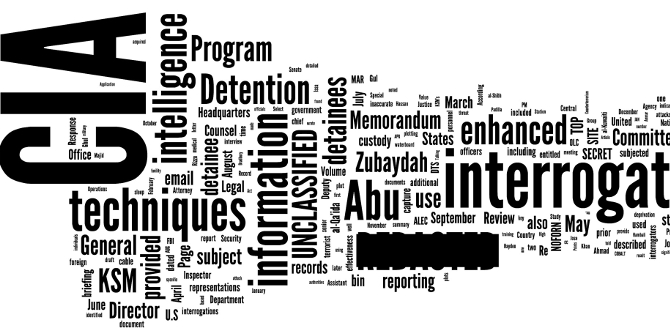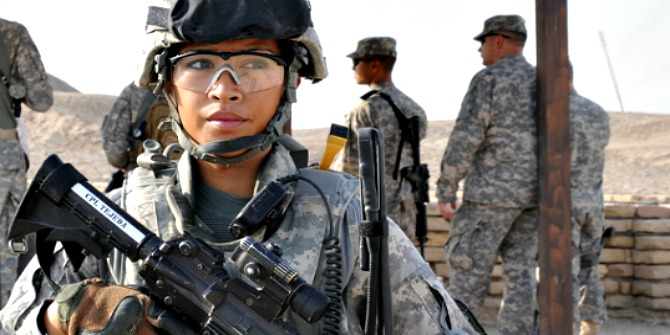 This month has seen the resumption of talks between Iran and the P-5 plus one group of nations over that country’s nuclear program. While there have been positive murmurings over the possibility of a deal from the Obama administration, Europe, and the Iranians, many in the U.S. Congress have spoken out against it. Harry C. Blaney III looks at those supporting and opposing the potential deal, and argues that an agreement could help aid the process of reconciliation in the Middle East, and as such, the U.S. and its allies should work hard for one despite any setbacks.
This month has seen the resumption of talks between Iran and the P-5 plus one group of nations over that country’s nuclear program. While there have been positive murmurings over the possibility of a deal from the Obama administration, Europe, and the Iranians, many in the U.S. Congress have spoken out against it. Harry C. Blaney III looks at those supporting and opposing the potential deal, and argues that an agreement could help aid the process of reconciliation in the Middle East, and as such, the U.S. and its allies should work hard for one despite any setbacks.
The current session of the ongoing Iran nuclear talks (which are set to run until the end of March) will be focused on the remaining key “macro” political issues that are still outstanding. There are indications on both sides that a deal may at last come together. However, they all say “but nothing is agreed upon unless everything is agreed on,” that there are a lot of difficult issues that remain, and that there are strong opponents of any deal on both sides.
Recently we have seen statements from the “P-5 plus one” (United States, China, France, Germany, Russia, and the United Kingdom), that some progress is in the cards. President Barack Obama said “We have made progress in narrowing the gaps, but those gaps still exist.” On the European side, EU foreign policy chief Federica Mogherini said at a meeting in Latvia, “I believe a good deal is at hand. I also believe that there is not going to be any deal if it is not going to be a good deal.” She added the “last mile” of the nuclear talks would involve political will more than technical negotiations.
On the Iranian side, Iran’s Foreign Minister Mohammad Javad Zarif said we believe we are ‘very close’ to a nuclear deal during an interview with Anne Curry of NBC News on March 4th. Further, in an interview with a weekly affiliated with the Islamic Republic of Iran Broadcasting published on Saturday 7th March, Zarif said, “I believe there are more chances of success than failure,” adding “the odds of [reaching] a [final] deal is more than 50 percent.” He said, as noted earlier: “but nothing is agreed upon unless everything is agreed on.”

Foreign Secretary Philip Hammond with US Secretary of State John Kerry in London, 21 March 2015. Credit: UK Foreign and Commonwealth Office (Flickr, CC-BY-2.0)
All of these statements are contingent on the final requirement that both sides desire a “good” agreement and are willing to pay the political price for such an agreement. Iran especially needs to accept that a nuclear “option” is not in its fundamental interest. The administration has said that this agreement does not require Senate ratification since it is not a treaty but an executive or political agreement between governments. The president can waive some of the sanctions but not all of them and this issue is a sticking point. On the Iranian side there remains opposition from hard liners, but I doubt that Zarif would be able to proceed unless he was given authority to do so from the highest authorities. Yet any “political” or “framework” agreement would still have to be sent back to the “experts” for specific drafting and review before a formal agreement was signed. This could take months, not weeks.
In Congress the Republicans seem determined to veto any agreement they do not like. It looks sadly like many Republicans will oppose even a “good and strong” agreement. They were stopped from pushing forward a GOP plan to act before the March 31st negotiating deadline by the Democrats since the fear was that by before the negotiations ended, Congress would act on a draft anti-agreement legislation that would undercut and indeed put up a series of barriers against any realistic agreement coming into existence. The question now is whether the Democrats can hold together against such a plan should an agreement be settled.
The more recent news is the surprising and most duplicitous action by 47 Republican Senators who have interfered and intervened into on-going delicate negotiations with Iran to limit their nuclear program. This was done on the brink of the start of new high level meetings of the key powers in Geneva and is a direct affront to the President who under our constitution has responsibility for foreign affairs.
As the New York Times Tuesday March 10th front page story reporting characterized it: “The letter appeared aimed at unraveling a framework agreement even as negotiators grew close to reaching it.” The partisan effort was criticized by President Obama, and very strongly by Vice President Biden who denounced the Senate Republicans.
President Obama’s statement was: “It is somewhat ironic to see some members of Congress wanting to make common cause with the hard-liners in Iran. … It’s an unusual coalition.” I was for 25 years a diplomat and have never experienced such a direct effort by one party to directly aim at undermining a major sensitive and important to our national security high level nuclear negotiations.
The Iranians reportedly said they were not moved by the letter. Iranian Foreign Minister Javad Zarif said in response: “In our view, the letter has no legal value and is mostly a propaganda ploy. He added: “It is very interesting that while negotiations are still in progress and while no agreement has been reached, some political pressure groups are so afraid even of the prospect of an agreement that they resort to unconventional methods, unprecedented in diplomatic history.”
From a macro strategic perspective, such an agreement could have major implications upon the possibility that limited rapprochement could ensue, and a broader set of regional issues, not least how to deal with ISIS, and a effort to reconcile the Shia-Sunni divide and even get Iraq unity back on track. As with all such deep and historic acrimony, nothing is certain and unpredictable change is always lurking on the sidelines to reappear when it is politically expedient for one side or another. But if America and our allies are to help a process of reconciliation in the region, they need to take the long-view and work very hard at it despite any setbacks.
A version of this post originally appeared at the Rethinking National Security blog.
Please read our comments policy before commenting.
Note: This article gives the views of the author, and not the position of USApp– American Politics and Policy, nor of the London School of Economics.
Shortened URL for this post: http://bit.ly/1Ce1eKP
______________________
 Harry Blaney – Center for International Policy
Harry Blaney – Center for International Policy
Harry Blaney is a Senior Fellow at the Center for International Policy. He brings over thirty years of experience in international affairs to CIP and has held senior positions in the federal government, policy research, and non-profit organizations. His experience includes the White House, State Department, foreign affairs think tanks, and U.S. diplomatic posts abroad. His main focus has been on national security, including non-proliferation arms control, US-Europe relations, US-Russia, and global issues including energy, climate change, conflict zones, NATO, EU, and macro-strategic issues.






